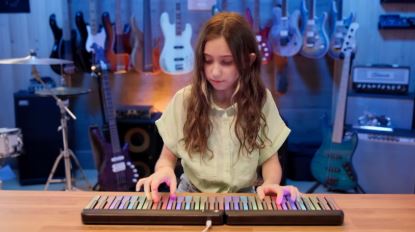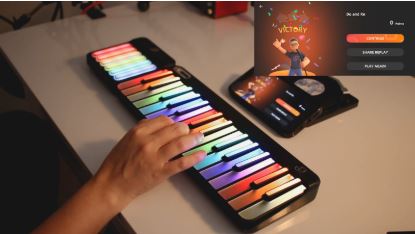
If space is tight—or you want something you can toss in a backpack—a small keyboard piano is the perfect way to start playing without the bulk or cost of a full digital piano. In this buyer’s guide, you’ll learn what “small” really means, how to pick the right key count, the features that actually help beginners practice, and a few use‑case “best picks” so you can match a small piano keyboard to your goals.
“Small” usually means 32–61 keys, compact depth, and low weight—easy to carry and simple to store.
A small keyboard piano for practice should:
If you mostly want pop songs, film themes, or worship chords, a small portable keyboard piano gives you everything you need to learn and enjoy playing at home.
Choosing the right size is the biggest decision. Here’s a quick guide to narrow it down:
|
Key Count |
Best For |
Pros |
Cons |
|
32–37 |
Kids, travel, ultra‑small desks |
Light, backpack‑friendly, inexpensive |
Limited range; two‑hand pieces get cramped |
|
49 |
Most beginners, apartment practice |
Great middle ground; big enough for melody + left‑hand roots |
Some intermediate pieces need more range |
|
61 |
Growth headroom, adult learners |
Room for fuller left‑hand parts; still a small piano keyboard |
Larger footprint; slightly heavier |
When you compare options for the best small keyboard piano, focus on features that directly improve your learning curve:
These aren’t mandatory, but they make a small portable keyboard piano more enjoyable:
Rather than pushing brands, match your needs to the right style. Here are beginner‑friendly “wins” for each scenario.
Pick a small keyboard piano with light‑up keys and an app that waits when you miss and loops tricky bars. You’ll complete your first song in days, not weeks.
Why it works: visual guidance + tempo control = fewer stalls and more “I can play this!” moments.
Choose 49 keys, slim depth, and headphone output. Add rubber feet or a folded yoga mat under the stand to cut vibrations.
Why it works: enough range for melody + left hand, minimal footprint, truly quiet practice.
Go 32–37 keys with battery power and Bluetooth MIDI. Pair your phone for sounds and a metronome, and practice in short bursts.
Why it works: you’ll actually bring it with you—consistency beats size.
Look for velocity‑sensitive keys, a metronome, USB MIDI, and basic speakers. Skip flashy extras at first; invest in headphones and a pedal later.
Why it works: a simple small piano keyboard for practice keeps costs down and builds skills you’ll use forever.
Choose a compact board with MIDI first—pads/knobs are a bonus. Use a DAW or mobile app for sounds, loops, and recording.
Why it works: It doubles as a creative tool while you learn.
A good setup turns a small keyboard piano into a daily habit:
Short, consistent sessions beat occasional marathons. Use this 20‑minute routine five days a week—ideal for a small piano keyboard.
Week 1 — Get moving (right hand + rhythm)
Week 2 — Add the left hand (roots or simple chords)
Week 3 — Second song + rhythm patterns
Week 4 — Polish and share
This plan keeps you moving without overwhelm and makes the most of a small piano keyboard for practice.
A small keyboard piano lets you start today—no huge investment, no dedicated music room required. Choose the key count that fits your space, prioritize learning features over flashy extras, and keep your setup simple so practice happens daily. If you want the shortest path to your first finished song, try a light‑guided, app‑connected model like this compact smart keyboard, then grow from there.
Is a small keyboard piano good for beginners?
Yes. For pop songs, film themes, and basic chords, a small portable keyboard piano is ideal—quiet, affordable, and easy to store.
How many keys should I get?
Can I learn with headphones only?
Absolutely. Headphones are perfect for apartment practice and help you focus on even touch and rhythm.
Do I need weighted keys right away?
Not necessarily. Velocity‑sensitive keys are enough to start; upgrade later if you pursue classical repertoire.
What’s the fastest way to build a habit?
Keep the instrument always ready, follow a 20‑minute plan, and use guided lessons or LEDs so you can finish songs quickly.
Leer más

How to Practice Piano Quietly in an Apartment
Living with thin walls doesn’t have to stop your music. If you’ve been wondering how to practice piano quietly in an apartment, the good news is there are simple, affordable changes that keep pract...

Full Piano Keys Labeled: Beginner’s Guide to Every Note
Looking for full piano keys labeled in a way that actually sticks in your memory? This beginner‑friendly guide shows you how the keyboard is organized, where Middle C lives, how to read enharmonic ...